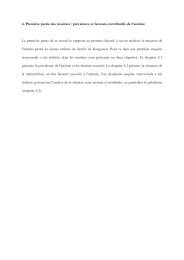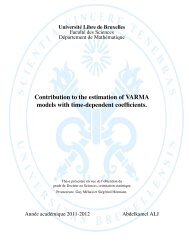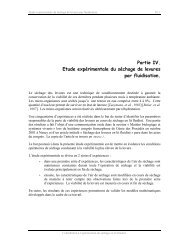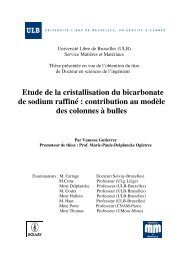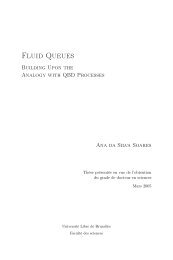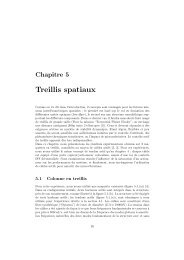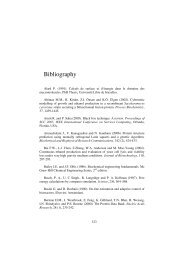Diapositive 1 - de l'Université libre de Bruxelles
Diapositive 1 - de l'Université libre de Bruxelles
Diapositive 1 - de l'Université libre de Bruxelles
You also want an ePaper? Increase the reach of your titles
YUMPU automatically turns print PDFs into web optimized ePapers that Google loves.
Chapitre IIIcontrolled aquarium conditions the relationships between Mg/Ca and Sr/Ca ratios in theskeleton and salinity as well as growth rate. Possible confusing factors like animal age(size) or ossicle type were also investigated.MATERIAL AND METHODSAll experiments were carried out using the starfish Asterias rubens. This species is able towithstand large salinity differences (Sarantchova 2001) and is representative ofechino<strong>de</strong>rm skeletal characteristics (e.g., see Dubois & Chen 1989). Furthermore, it canbe easily obtained in large numbers and shows a fast growth in an aquarium.Field samplesFor analysis of Mg, Sr, and Ca in different skeletal plates, starfish A. rubens werecollected at low ti<strong>de</strong> on a breakwater in Knokke (Belgium) on January 9th, 2007.Temperature and salinity were respectively 9.2°C and 30.8 psu. Starfish were measured(55 ± 6 mm ray length) and then immediately dissected. For assessing the effect of size(age) on Mg/Ca and Sr/Ca ratios, 92 starfish A. rubens showing a wi<strong>de</strong> range of sizes(17–105 mm ray length) were collected at low ti<strong>de</strong> on a breakwater in Audresselles (Pas<strong>de</strong>-Calais,France) on October 26th, 2007. Temperature and salinity were respectively12.8 °C and 34 psu. Starfish were measured and then stored at -20°C until treatment.Experimental studyJuvenile A. rubens (10-35 mm in ray length) and mussels were collected in November2006 at low ti<strong>de</strong> on breakwaters in Knokke (Belgium). Temperature and salinity at thesampling site were respectively 12.5°C and 31.8 psu.Starfish were first acclimatized in an aerated, temperature controlled (14°C) closed circuitaquarium system containing 1200 litres of seawater at a salinity of 31.5 psu. The salinitywas <strong>de</strong>creased by 0.5 psu/10 days until 30 psu by adding fresh water. After 50 days, thestarfish were transferred in eight in<strong>de</strong>pen<strong>de</strong>nt closed-circuit aquariums containing 100litres of Wimereux (Pas-<strong>de</strong>-Calais, France) seawater at 14°C and 30 psu. The filtrationsystem was ma<strong>de</strong> of an external tank containing plastic bioballs, synthetic foam andsynthetic wool. The initial size distributions of the starfish were i<strong>de</strong>ntical in all aquariums.Temperature and salinity were modified by 0.5 psu/4days and 1 °C/10days to reach theexperimental conditions (11, 18 °C; 25, 28, 32, 35 psu). Temperature was adjusted bythermostatic control of the two cold rooms containing the aquariums (4 aquariums/cold63



